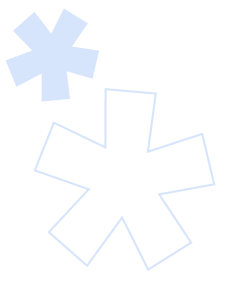HR software makes an indispensable element of your work – it’s high time to ditch Excel files and paper. For recruitments, you can choose from various applicant tracking systems. In two words, it’s a recruitment CRM version that helps you overview and manage the relations you have with your candidates.
What’s all the buzz about, why this tool is worth your attention, and how to choose the best applicant tracking system for your organization? I’ll try to answer those questions.
What is an applicant tracking system?
An applicant tracking system is used for the electronic management of recruitment processes. Its primary purpose is to be a central place for recruitment efforts your team undertakes. You can use it both in recruitment agencies and in your internal human resources team.
Think of an applicant tracking system as if it was a recruitment CRM: you gather data about your job applicants and the history of communication between you. That’s the basics, yet applicant tracking systems can give you far more possibilities to improve your daily work.
Actually, there’s a lot of similarities between managing candidates and clients – even sometimes you can find an explanation of CRM as a candidate relationship management system. Recruitment takes a lot from the customer service world, learning how to provide the best experience for candidates. An applicant tracking system helps you describe and assess your processes.
When do I need ATS software?
Is it the right time to get applicant tracking software? Don’t try to find too simple rules – mostly, it is when you feel either your processes are overwhelming and inefficient, or you start losing control over them.
Having not gotten back to the applicant
Ghosting is probably one of the most painful things for your job candidates. It happens when you don’t come back to the applicant after some initial contact or an interview. Any type of message is better than silence, especially when your candidate takes part in various processes.
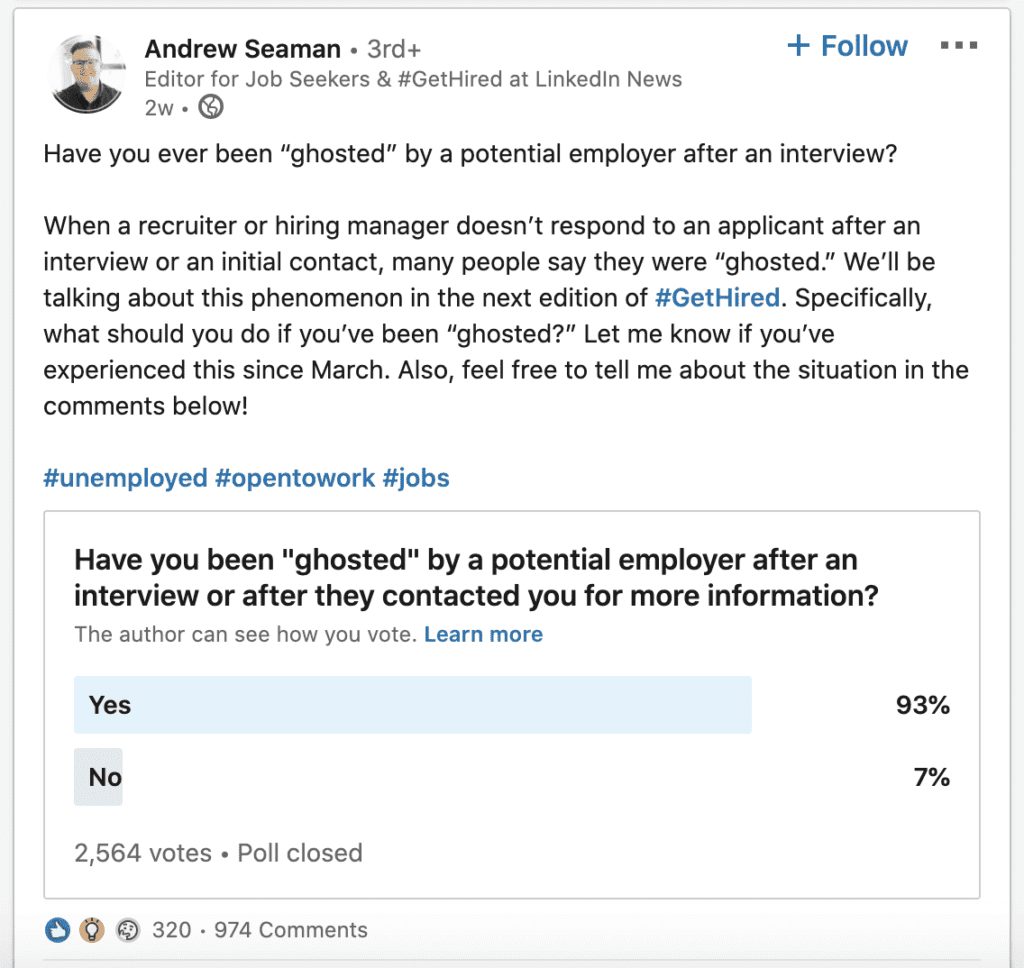
If it happened in your recruitments, think about the underlying cause. Was it because you wanted to avoid directly rejecting the candidate? Or maybe when you realized you ghosted them, it was just too late?
This is just one of many more signs of losing control over your recruitment process. Having a central place to work from can simplify your workflow and give the control back to you.
Working on the quality of the recruitment process
Similarly like with negative customer reviews, the word spreads about bad recruitment and job experiences. Whether you ghosted your candidates, gave generic feedback or in other ways neglected the candidate experience, they might warn their friends against you.
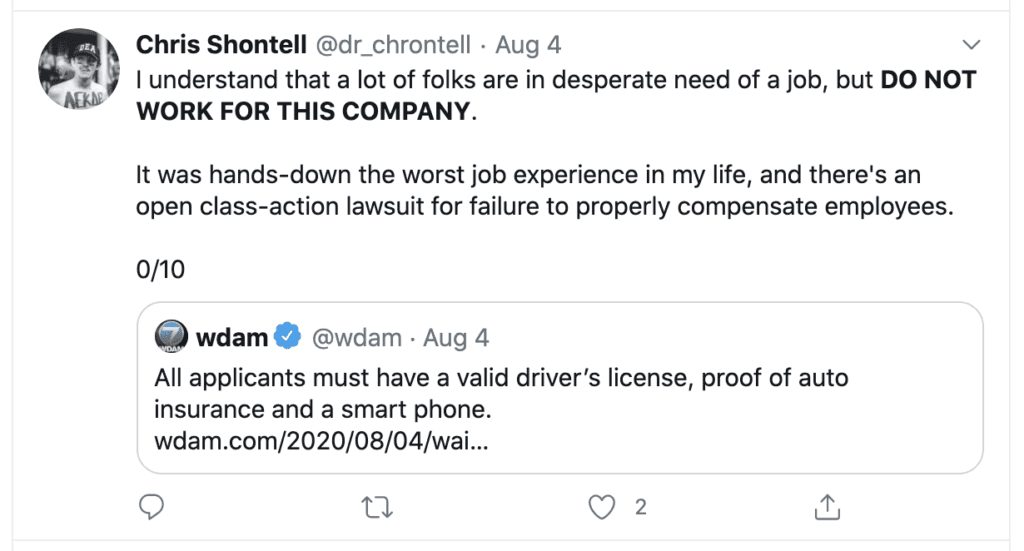
If you notice a positive impact of your customer relationship management system on your business, similarly you can consider an applicant tracking software. It helps you organize not only your process but also the information you have about each candidate. That’s how you can personalize the experience you provide.
And great experiences are a starting point for nurturing your relationship with each candidate – that’s what the recruitment industry is all about.
Looking for ways to shorten the recruitment process
According to a 2021 study from LinkedIn, the median time to hire is somewhere between 33 and 49 days – depending on the industry. It shows you the time that passes between sending the application and the first day at work.
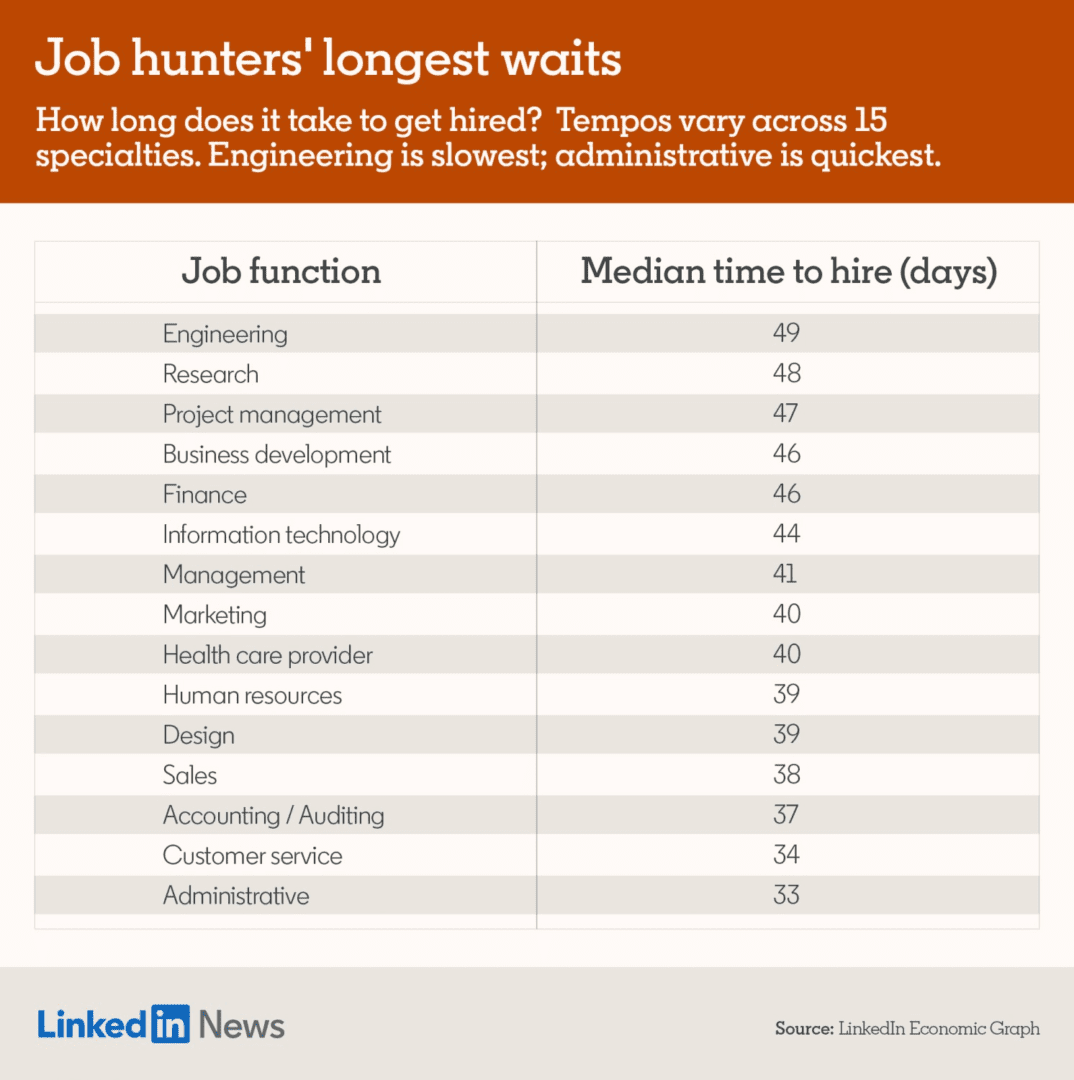
You can’t influence all the elements that are responsible for the duration of your process, like the notice period. Nevertheless, the delays in sending messages, unnecessary steps, or vacillating on the final decision – that’s all under your control.
There are three reasons why you should care for shortening your recruitment processes:
- good talent doesn’t hang around
- cost of your recruiting time is increasing
- the empty position is costing your company unfulfilled responsibilities
As Officevibe claims, the best candidates are off the market within ten days. It means that another employer can be ready to hire them, even before you get to the final step of your process, or – worse – set an interview.
Similarly, the longer the recruitment process lasts, the more expensive it gets. Think about all the talent acquisition team responsibilities: screening, sourcing, interviews etc. All of that also counts in the investment you make.
Last, but not least, comes the cost of an unfilled position. The quicker you get and hire an appropriate candidate, the sooner the business can develop. When you analyze the big picture, it really adds up.
Applicant tracking software helps you find bottlenecks in your recruiting process and let your hiring team work on top of their possibilities. It can be a tool for your performance management and give you hints on how to optimize your hiring process.
What is included in applicant tracking software?
Applicant tracking systems work for streamlining your processes. Take a look at what you can find inside.
An overview of the current recruitment processes
Think of an applicant tracking system as the control center for your recruitments. You can quickly catch up with all the openings, check how advanced is the process, and what’s the status of each candidate.
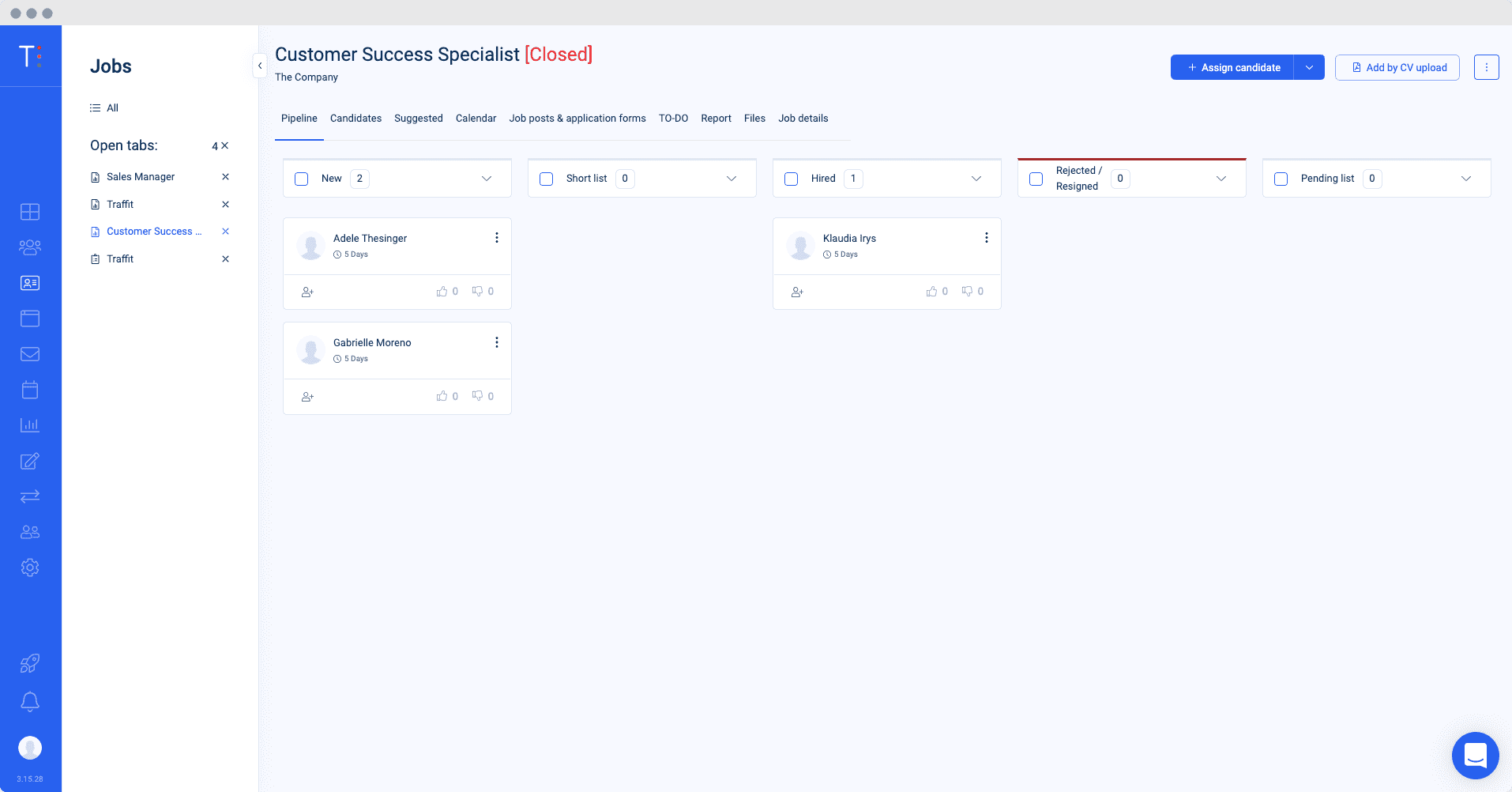
Usually, it works also for communication: both externally, with your candidates, and internally within the team. You can exchange notes and comments on the candidates, send them messages, or share their profiles via e-mail.
Data on your closed recruitments
In the applicant tracking software, you will find also all the data on past recruitments. It helps you in several areas:
- understanding the dynamics of your recruitment process,
- observing which talent acquisition channels and promotional tactics worked for you,
- adjusting job postings to cover the most common candidates’ questions,
- analyzing the talent pool,
- understanding where your candidates drop off and adjusting your hiring process.
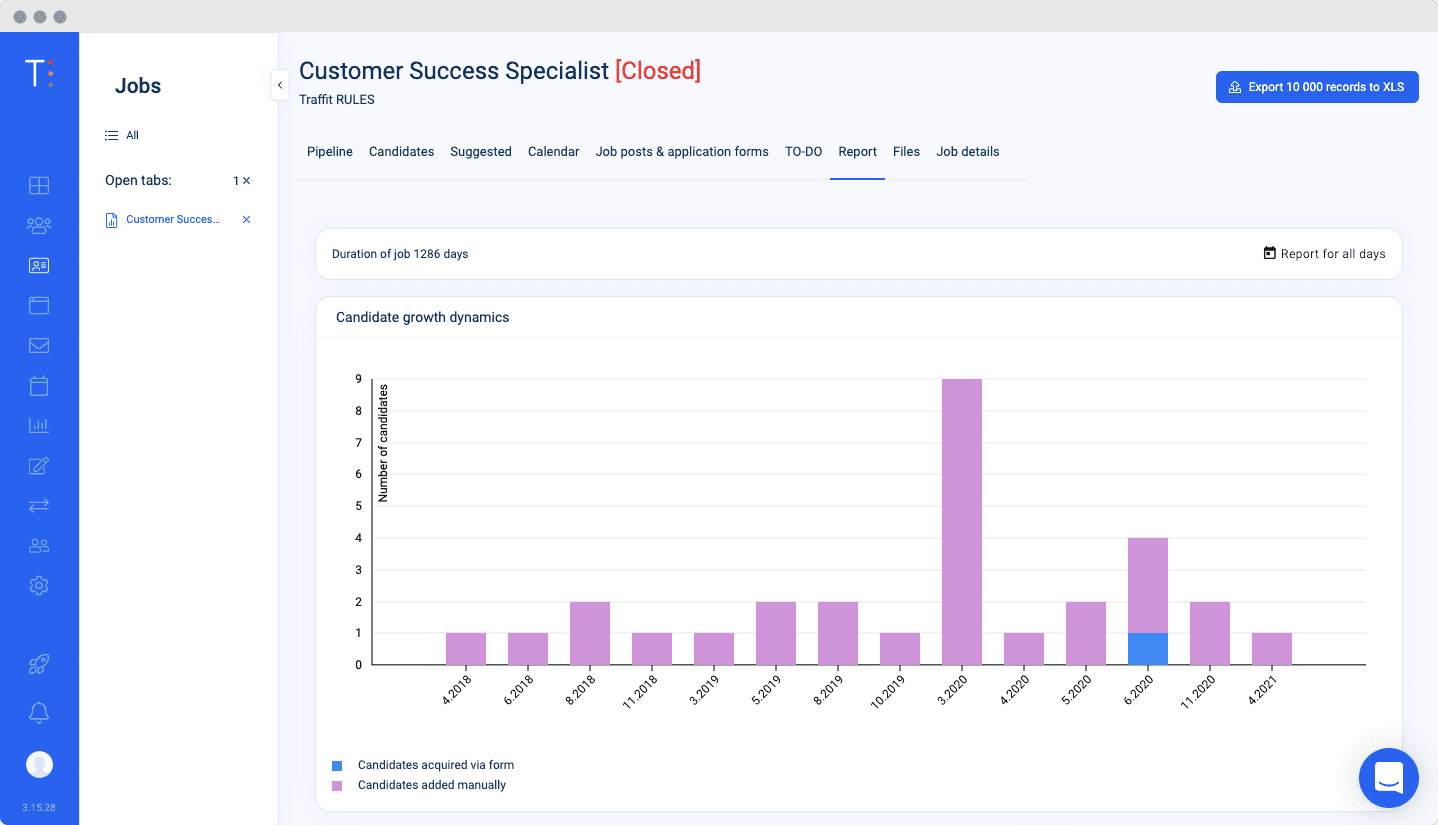
Checking what worked in your past recruitments will help you understand how is your process adapted to the needs of job seekers. That’s probably the most important edu resource for HR professionals.
Analytics dashboard
Data analytics and reports let you work on data gathered in your applicant tracking system.
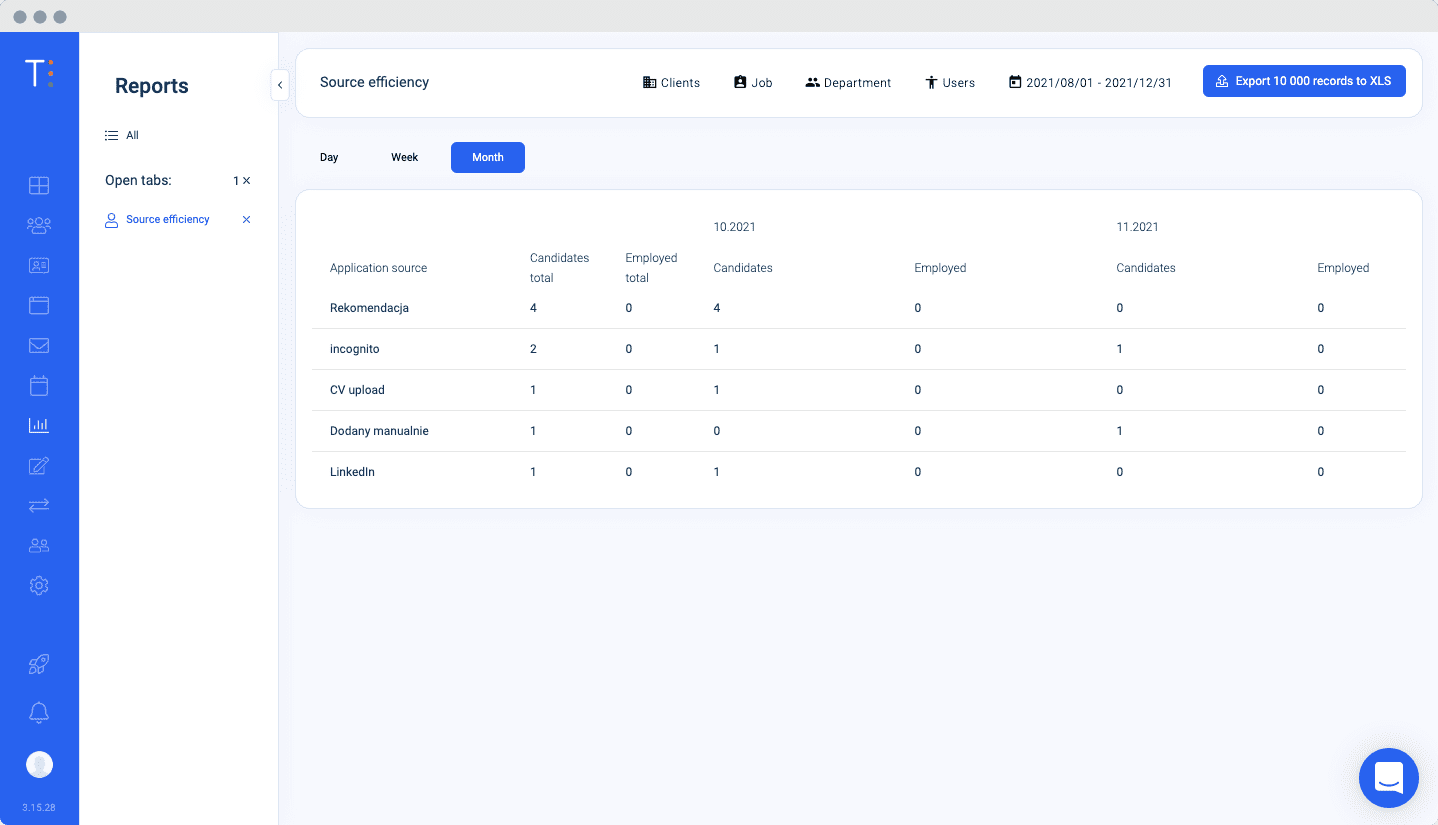
There are several examples of questions that you can find answers to:
- Which channel brings you the most qualified candidates?
- Which part of your hiring process is the least effective?
- How many candidates enter your career site?
- What is your average recruiter productivity?
- Is your job description precise enough, or do your candidates ask similar questions to understand better job openings they apply for?
- Should you pour more money into your job ads?
- Should you work on your employer brand and engage in promotional events?
- What is the hiring process like for your candidates? How do they assess it?
As you can see, they cover multiple areas: from awareness and employer branding through multiple channels of talent acquisition, and, finally, candidate experience and overall hiring process efficiency.
How can recruitment software help me in my daily recruitment tasks?
Applicant tracking systems help you get the top talent by making your life easier – that’s the general point. Yet, what does it mean in practice?
Keep in mind that it helps not only you – your hiring managers can use it for staying up to date with the recruitments they lead for their team.
Talent pool search
In talent acquisition tasks, good search skills are highly valued. Why don’t you save the results of your efforts for future use? That’s what the talent pool is for. It’s a database of potential, interesting candidates for job openings you might have in the future.
Read the post on how to create a talent pool and keep it fresh.
A well-grown talent pool makes a perfect place to start your searches. If you store it within your applicant tracking system, you have all the information you need at your fingertips. Got a bunch of useful search tools? Even better.
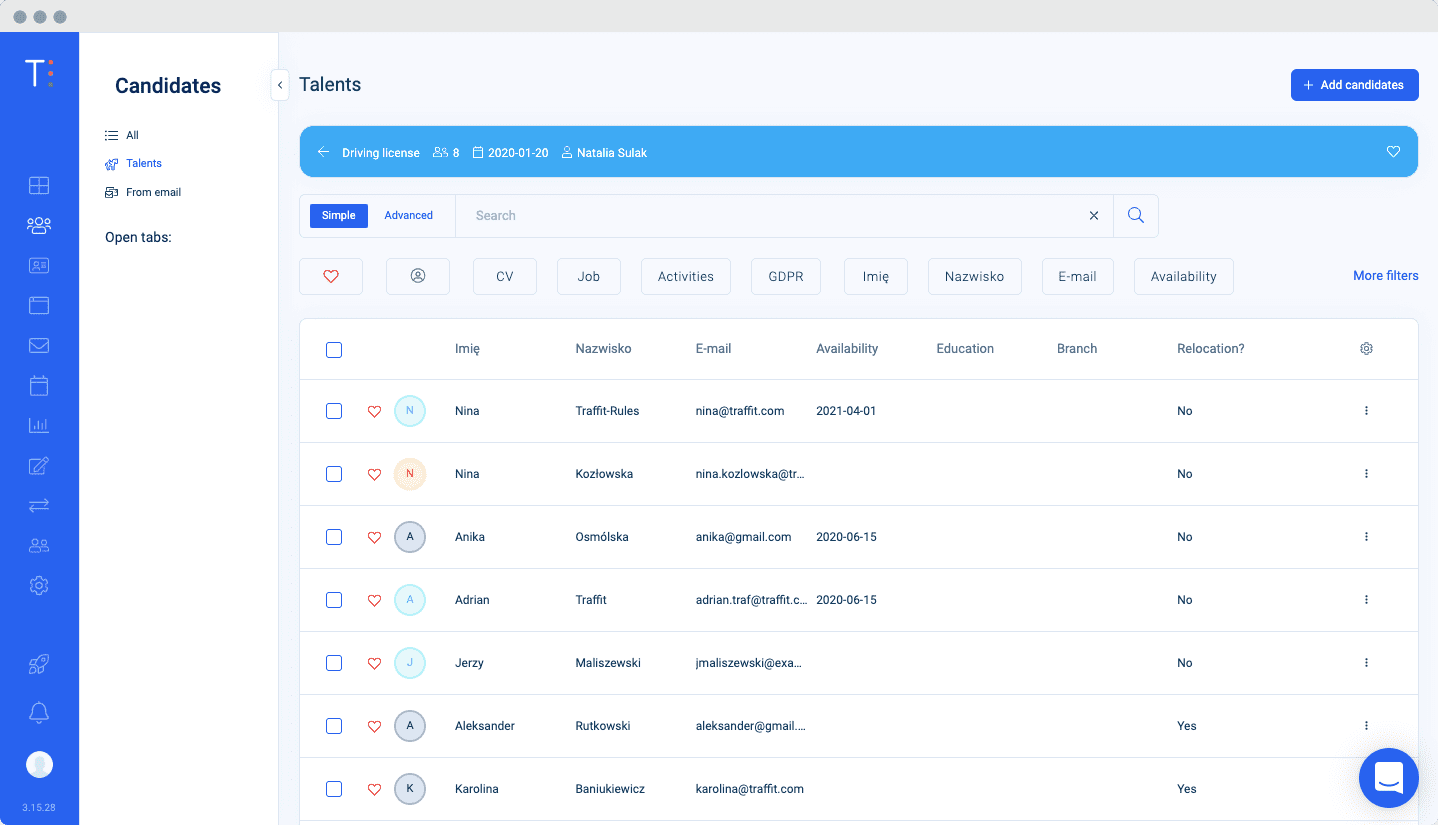
Take a look at Talents. Talents are groups of candidates that possess certain skills and help you in organizing your talent pool. Similarly, you can use tags for all the other needs.
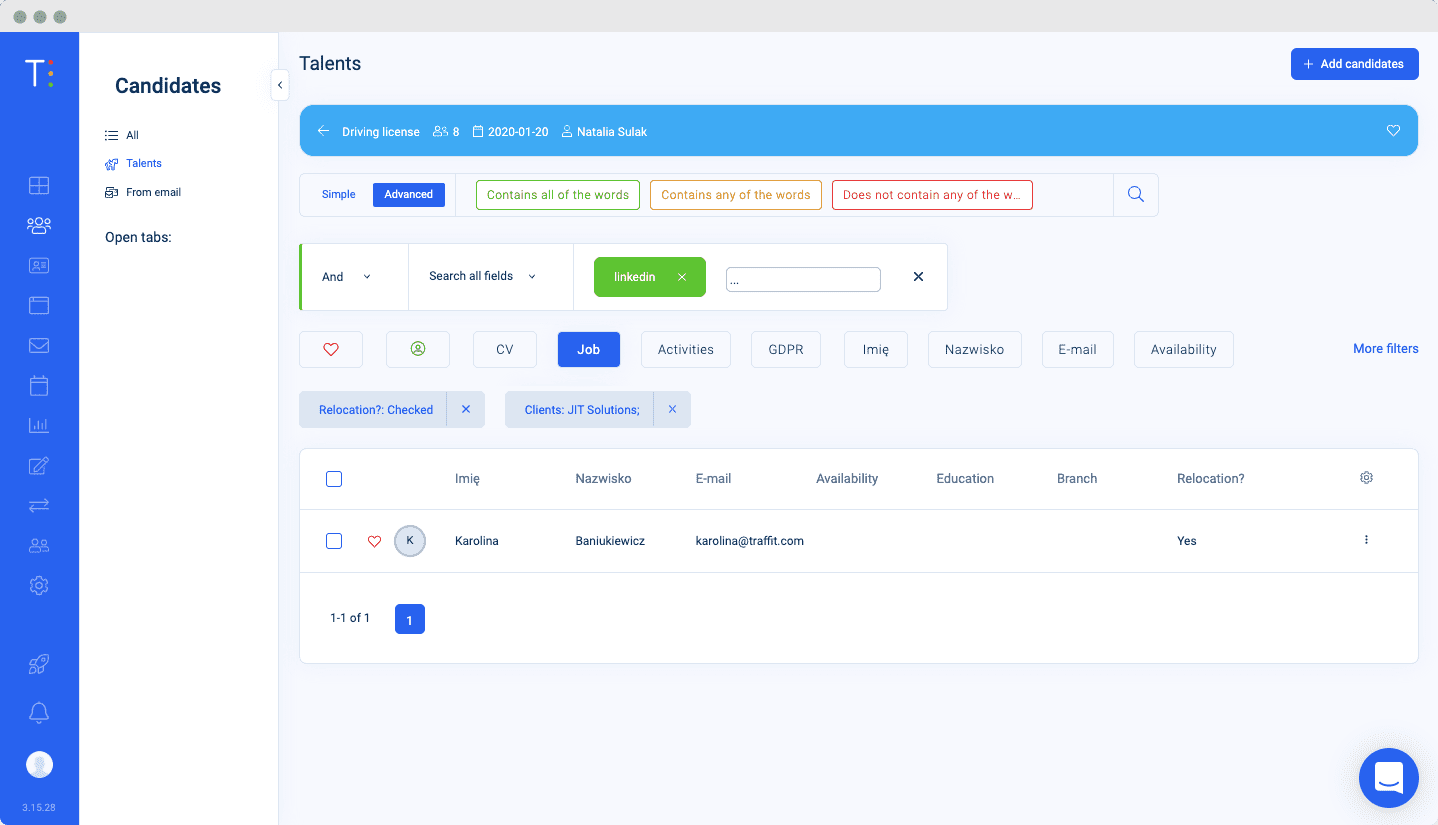
You can search your talent pool using not only Talents, tags, or regular search bar, but also Boolean commands. That’s how you can extract candidates meeting your precise criteria.
Add talent pool to your daily toolbox and save time needed for coming up with interesting candidates.
Efficient team cooperation with hiring managers
Your recruitment process involves not only recruiters but also hiring managers – and your applicant tracking software should reflect it. Hiring managers get access to view candidates’ profiles, can leave notes and comments, and don’t need to ask the recruiters for the most basic information.
When recruiters and hiring managers alike can check the current status of job openings and exchange opinions asynchronously, their cooperation flows and is easier to combine with their daily duties.
Automated communication
Keeping your candidate up-to-date is crucial for providing the optimal candidate experience. Whether it’s about sending recruitment tasks or informing about the next stages, the sooner the message reaches the recipient, the better. Setting up automatic e-mails saves you time and trouble.
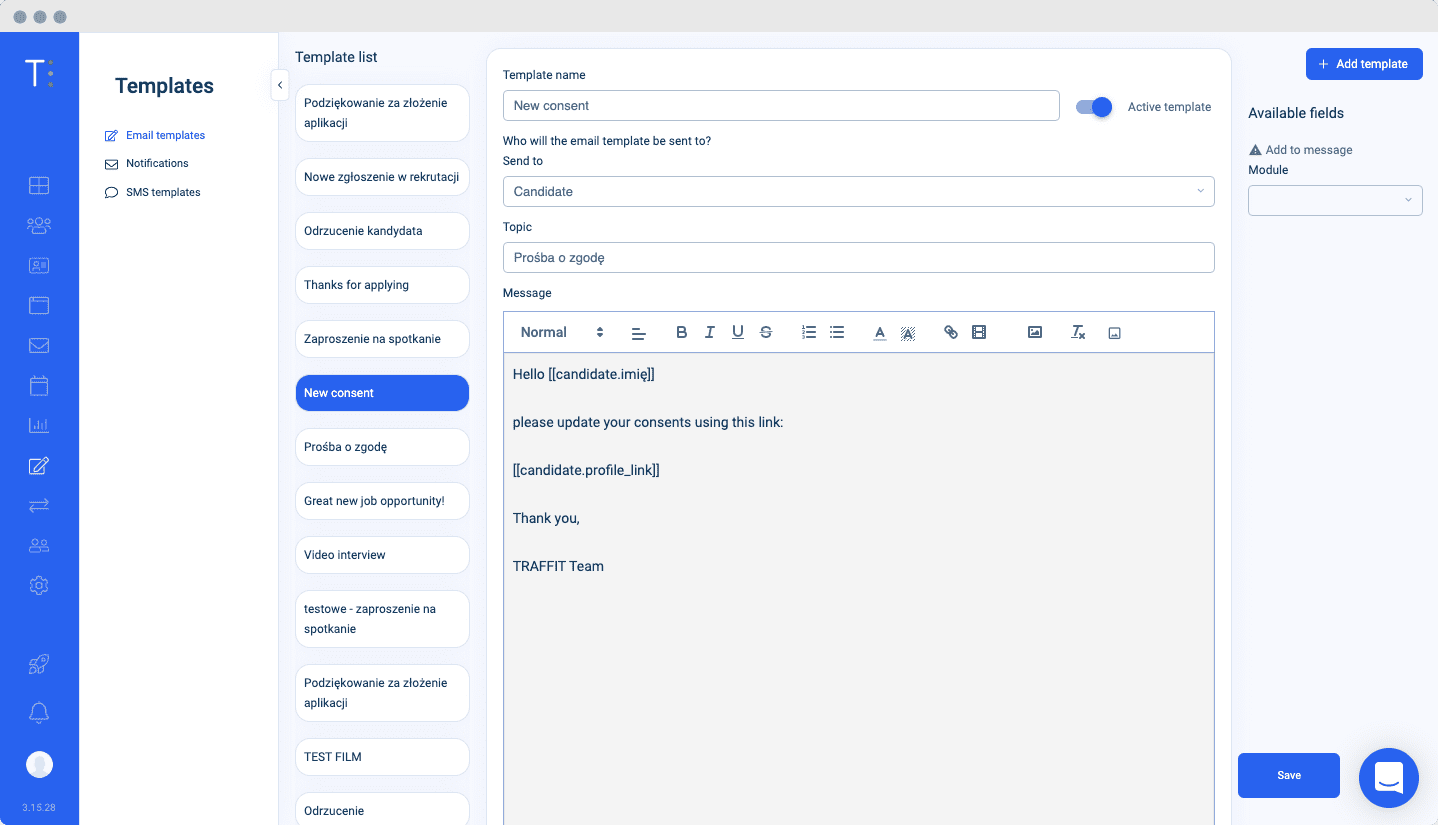
Automatic notifications on e-mail or Slack are equally useful for recruiters. You don’t have to check manually the system for new applicants or tasks, or set reminders in external systems about given situations.
Automated doesn’t need to mean impersonal. You can use the data from your recruitment system to fill in the templates with more personalized information. That both enhances your candidates’ experience, saves your time that would be spent on manual tasks, and minimizes the risk of errors.
Extended analytics of your hiring process
With an applicant tracking system, you can evaluate the way your hiring team works. From paying a close look at your talent acquisition channels to each job posting, the step of your recruitment process, and the way of giving feedback, you can work on each element – one by one.
Those numbers you find in HR software help you make smarter decisions. For example, when most of your successful hires come from employee referrals, why invest in the popular job boards that don’t bring results in your case?
Make sure to contrast them with your business KPIs. Even the best ATS software won’t be enough source of business information.
Easy Career page creation
Your career site is the place where your candidates can get all the most important information about you as an employer and your job openings. It’s way more than just job descriptions! You can use it for:
- showing the feeling of your organization culture
- presenting people who work in your company
- sharing the projects you’ve been working on.
Ultimately, it’s the place where you can show what’s unique about your company.
And it doesn’t have to be complicated. If you choose an applicant tracking system designed with self-sufficiency in mind, you can create your career site on your own. A good example is TRAFFIT Career Page Generator
Also, check if you can integrate it easily with your applicant tracking software. This way you’ll be sure all of your information is up to date – with no need for manual changes.
Your career page serves as the final destination for all your recruitment marketing efforts. That’s why, apart from integrating it with your ATS software, check whether you can add a tracking code snippet from your Google Analytics. This way, you are able to assess the efficiency of the channels you use for attracting candidates.
Useful automation
Work smarter, not harder, and squeeze the possibilities that tools give you. Check out how you can automate your daily tasks with integrations and automation flows, like resume parsing. Applicant tracking systems open a lot of possibilities!
It helps you focus on the human parts of your job: making the candidates feel they’re taken care of and looking for ways to help all of you achieve your goals.
When it comes to integrations, look not only on the HR software you’re using but also on general tools like Slack or Google Workspace. For example, a Google Meet integration helps when setting up video interviews.
If you work on high-volume recruitments or want to upload previous candidates to your ATS software, resume parsing can prove its usefulness. It reads the content of CV files that your candidates send and fills in the candidate profiles. In this way, you don’t have to manually open each file to compare candidates, and you can search for the needed info.
You can also check out automatic candidate suggestions based on your talent pool and keywords in your job descriptions. The search will display accurate candidate profiles that you already have a relationship with.
Similarly, an interview scheduling feature or tool can save you the hassle. Instead of hanging on the phone or exchanging numerous e-mails to choose a suitable date, you can just send out a link to your calendar and let candidates book the slots.
How can the business profit from an ATS software?
Implementing recruitment software won’t only make your life easier: the benefits will be felt by the entire business. The hiring process and its effectiveness define, after all, how your organization grows and develops over time. Nevertheless, HR professionals sometimes struggle with showing their impact on business. Applicant tracking systems help in putting numbers on recruitment.
Quickly getting the top talent
The sooner your talent acquisition team gets qualified candidates, the less money you spend on recruiting and covering the costs of an unfilled position. After all, top talent is the first one to get off the market. Recruiting software not only helps you work faster and shorten the hiring process but also shows you the bottlenecks. You can also get data to consider hiring a recruitment agency for you.
Read our blog posts on talent acquisition
Taking care of employer branding
Your employer brand impacts all your talent acquisition actions. When you consciously build it, it helps you attract people that fit your culture, gain trust and represent your company – not only as a product or service provider but also as an employer.
Read our blog posts on employer branding
Enhancing candidate experience
Taking care of your candidates and the experience you provide is everywhere – yet, what does it actually mean? How can you measure it? And, finally, what changes to implement?
It might be in little things, like using an interview scheduling feature and letting your candidate choose the suitable time in peace, instead of pushing them on a phone call. Also, even the job description, where you don’t just copy and paste meaningless words, but make sure to provide the most important information, might help you attract the best talents.
Read our blog posts on candidate experience
Understanding what lies behind successful hirings
The best-performing hiring teams constantly analyze factors that impact each recruiting process. It helps in performance management actions: you can optimize time spent on each recruitment and money you’ve invested in talent acquisition.
Read our blog posts on recruitment processes
What makes a good applicant tracking system?
There’s no such a thing as one, best ATS software for everyone. The needs of recruiting agencies, in-house talent acquisition teams, or individual head-hunting service providers are disparately different. So, how to find out what your team needs?
Make your priorities clear
That’s the starting point for your buying decision. Check the most painful pain points of your current situation. As a recruiter, you know your process inside out, but getting some fresh external perspective might serve as well. Some ATS providers give an option to schedule a free demo call when you can talk and find out your needs.
Also, make sure to talk to your hiring managers. They are an important part of your recruiting process and can give you important feedback about your current cooperation.
So, what to look at when choosing and how to make sure it’s the right applicant tracking software?
Features
Features cover various areas of your recruiting process. Match the priority features to areas you need to improve most – it will help you make the decision.
Take care of the communication with candidates with integrated mailbox, e-mail templates, and automatic notifications. Keep the entire history inside your ATS.
Cooperate more efficiently with notes, internal notifications, and Slack automation. Also, with an integrated mailbox, it’s easier to take over the processes when someone takes their time off.
For working faster, check out resume parsing, interview scheduling, or automatic job postings on job boards. This will take off of your shoulders some tedious, repetitive tasks that can be easily automated.
Integrations
Top applicant tracking systems work with other tools, making your daily tasks way easier. You can save time spent on copying data between different systems, set up automatic notifications, or trigger actions in one tool based on events in another. A great example of this – when you mark your candidate as hired, you can automatically get a list of tasks to prepare for the onboarding process.
Similarly, take a look at job posting options. List the job boards you’re interested in – based on the countries you recruit in or your niche – and check if the recruiting software you’re considering connects with them. TRAFFIT, for example, lets you post automatically on LinkedIn, Facebook Jobs, OLX in Poland and Romania, Jooble, and Indeed. It can save you around 20 min per job posting – in scale, it makes a lot.
If the applicant tracking system you consider is cloud-based recruiting software, you can join it with such systems as compliance tools or onboarding tools you use. By integrating your applicant tracking system with other HR tech tools, you can have a system that tackles most of or entire employee lifecycle – made from tools specialized in their areas.
Check both the built-in integrations, as well as services like Zapier. It helps you get further than just connecting your ATS software with HR tools. Another powerful, game-changing area is the business tools that your company uses. For example, Slack, as a communication tool, Google Meet to add meetings for video interviews, or Getresponse to add your candidates to a dedicated newsletter list. Integrations don’t have to be complicated: with Zapier, it’s just a few clicks.
Opinions
Getting software advice in sites like Capterra, GetApp, or G2 is a common way to research an interesting product – even before you get in touch with the company.
Facebook or LinkedIn groups posts on the best applicant tracking systems can also give you some inspiration and, most importantly, the opportunity to ask your individual questions. Talk to the HR managers, other recruiters, and hiring managers and gather your doubts.
Make sure to double check where is the software advice coming from. Apart from the credibility of the source, the perspective of staffing agencies will differ from enterprise businesses and their HR teams.
What are the technical requirements?
When you choose from SaaS applicant tracking systems, usually all you need is a browser and Internet connection. It lets your HR teams work from wherever they want – and in times of remote-first workplace, it’s a must.
How do you set up applicant tracking systems?
It’s easy – and in TRAFFIT’s case, you can constantly count on our Customer Success team support. Let’s talk about the steps you need to take to set up your ATS:
- Start with a free trial period.
- Set up accounts for you, your recruiters, and hiring managers.
- Think about your recruitment flow: what steps it’s made of, what are the rejection reasons you use and set it up in the system.
- Connect your account to the job boards, e-mail and calendar system.
And you’re all set for your first recruitment!
Of course, there are way more options, like:
- setting up your Career page
- choosing automatic notifications
- working on templates for job offers, application forms and e-mail notifications
- setting up your tags and talents
- adding useful integrations
and others that help you explore the full potential of your new applicant tracking system.
If you want to check how does it look like in TRAFFIT, don’t hesitate to schedule a free demo call. Our colleagues will lead you through each step and answer any questions you have.
